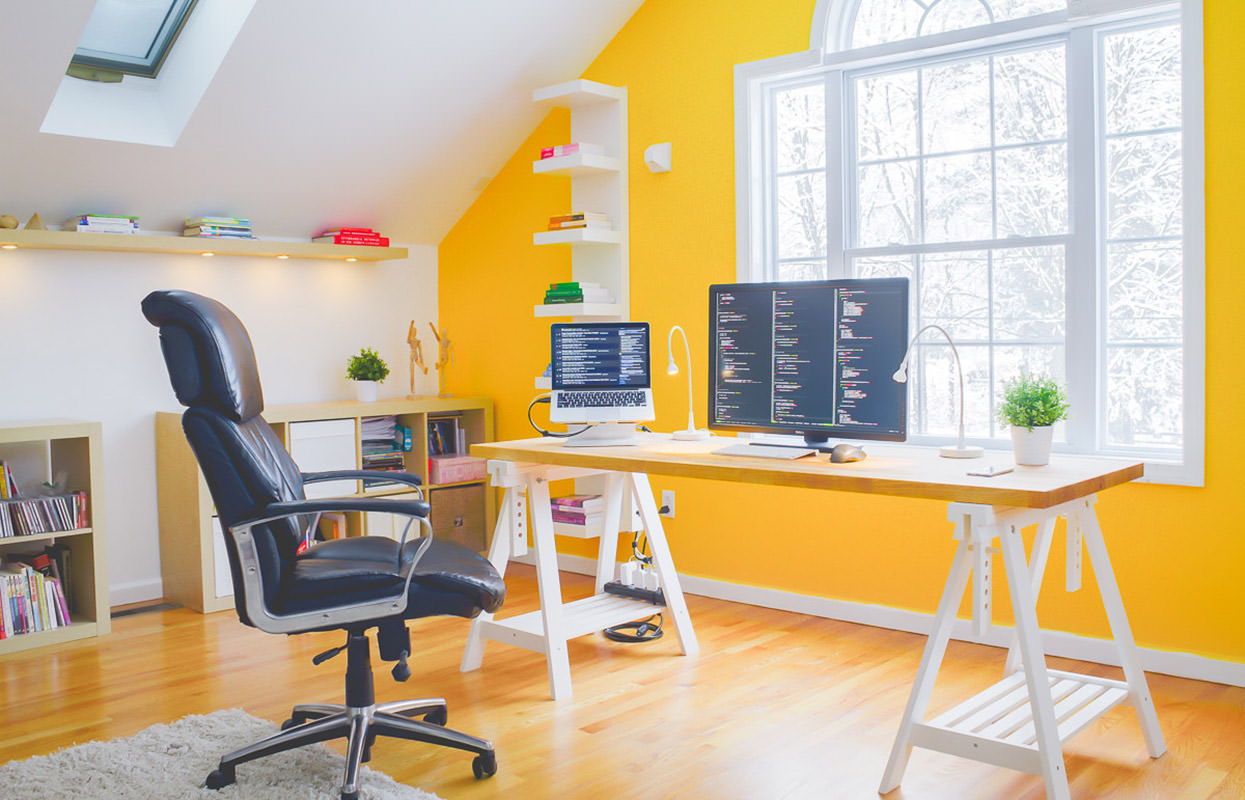As more and more people are working from home, home office design has become an increasingly important topic. The design of your home office can have a significant impact on your productivity, creativity, and overall well-being. In this article, we will discuss some key considerations when designing your home office and provide some tips on how to create a functional and inspiring workspace.
Ergonomics
One of the most important considerations when designing your home office is ergonomics. Ergonomics is the science of designing a workspace to fit the needs of the individual using it, in order to maximize productivity, comfort, and safety. Poor ergonomics can lead to a variety of health problems, including back pain, neck pain, and repetitive strain injuries.
To ensure good ergonomics in your home office, you should start by selecting the right furniture. Your desk should be at the right height for you, with enough space for your computer and any other equipment you need to use. Your chair should be comfortable, with good back support and adjustable height and tilt.
Lighting is also an important consideration when it comes to ergonomics. You should try to position your desk near a window to take advantage of natural light and supplement this with good task lighting. Avoid working in a dark or poorly lit space, as this can cause eye strain and fatigue.
Finally, make sure that your computer and other equipment are positioned in a way that minimizes strain on your body. Your monitor should be at eye level, and your keyboard and mouse should be at a comfortable distance from your body.
Color and Style
The color and style of your home office can also have a significant impact on your productivity and mood. Studies have shown that certain colors can affect our emotions and energy levels and that a well-designed workspace can improve creativity and focus.
When choosing colors for your home office, consider the type of work you will be doing. For example, if you need to be creative and come up with new ideas, you might want to choose colors like blue or green, which are associated with calmness and creativity. If you need to be focused and productive, you might want to choose colors like red or orange, which are associated with energy and productivity.
The style of your home office should also reflect your personality and work style. If you are a creative person, you might want to incorporate elements like artwork or colorful accents into your workspace. If you are more focused on productivity, you might want to keep your space clean and minimalist, with a few carefully chosen decorative elements.
Storage
Storage is another important consideration when designing your home office. You will need a place to store files, paperwork, and other materials related to your work, as well as any office supplies you need to keep on hand.
When choosing storage solutions for your home office, consider the type of work you will be doing and the amount of space you have available. If you work with a lot of paperwork, you might want to invest in a filing cabinet or shelving unit. If you use a lot of office supplies, you might want to consider a desk with built-in storage or a separate storage unit.
It’s also important to keep your storage solutions organized and tidy. A cluttered workspace can be distracting and make it difficult to focus, so make sure you have a system in place for organizing your materials.
Technology
In today’s digital age, technology is an essential part of any home office. You will need a computer, printer, and other equipment to complete your work, as well as a reliable internet connection.
When choosing technology for your home office, consider your budget and the type of work you will be doing. You may be able to save money by purchasing refurbished equipment or opting for a more basic setup, depending on your needs.
It’s also important to ensure that your technology is set up in a way that maximizes productivity and minimizes distractions. For example, you may want to invest in noise-canceling headphones to block out background noise or set up a second monitor to increase your screen real estate and improve your workflow.
Personalization
Finally, don’t forget to personalize your home office to make it a space that you enjoy spending time in. This can help to increase your motivation and creativity and make your work more enjoyable.
There are many ways to personalize your home office, from adding decorative elements like plants and artwork to incorporating sentimental items like photos or souvenirs from your travels. You can also add functional elements like a comfortable chair or a cozy rug to make your workspace more inviting.
When personalizing your home office, it’s important to strike a balance between function and style. While you want your workspace to be visually appealing, it should also be functional and conducive to work.










Conclusion
In conclusion, designing a home office is an important consideration for anyone who works from home. By considering ergonomics, color and style, storage, technology, and personalization, you can create a functional and inspiring workspace that maximizes your productivity and well-being. Remember to take your time when designing your home office and experiment with different layouts and configurations to find the setup that works best for you.
